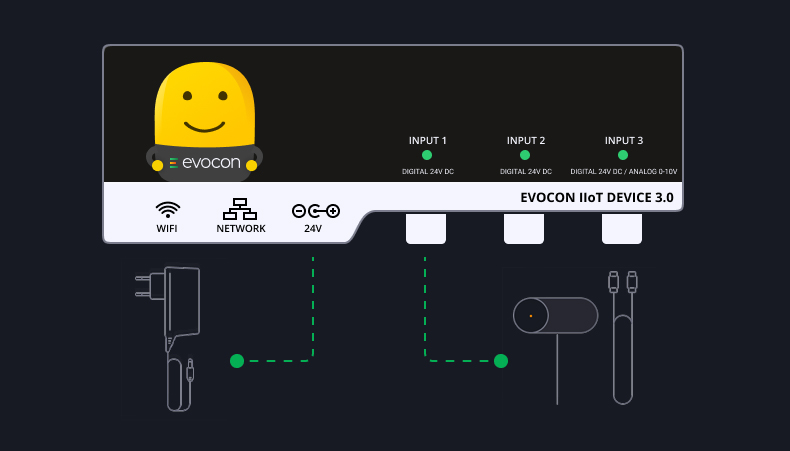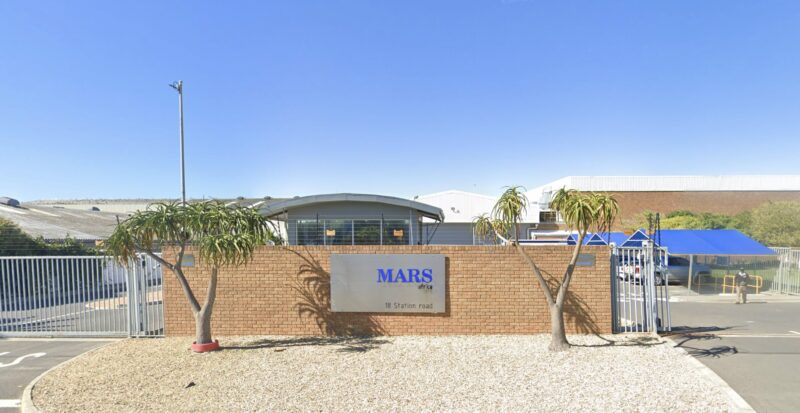In addition to other production outputs, the Evocon system can also measure the length and volume of products. If your production process fits either of these, then this article outlines how Evocon can help you monitor your production.
What Hardware Do You Need to Measure Length or Volume of Products?
If you need to measure the length or volume of your production output, then you need devices that are continuously rotating and sending a large number of signals.
For example, in the case of pipe extrusion, you need a rotary encoder that is on a measuring wheel. The wheel touches the pipe and rotates as it moves along the production line. The rotary encoder generates many signals per second and is capable of measuring product length with extreme precision.
Measuring the amount of liquid works in a very similar way. The liquid moves through a pipe with a flow meter installed. The flow meter is connected to a rotary encoder. Moving liquid rotates the meter, generating many signals per second.
The Evocon’s device registers these signals and sends them to our server. Evocon system processes data and displays it. All of this happens instantly, and you see the data displayed in real-time.
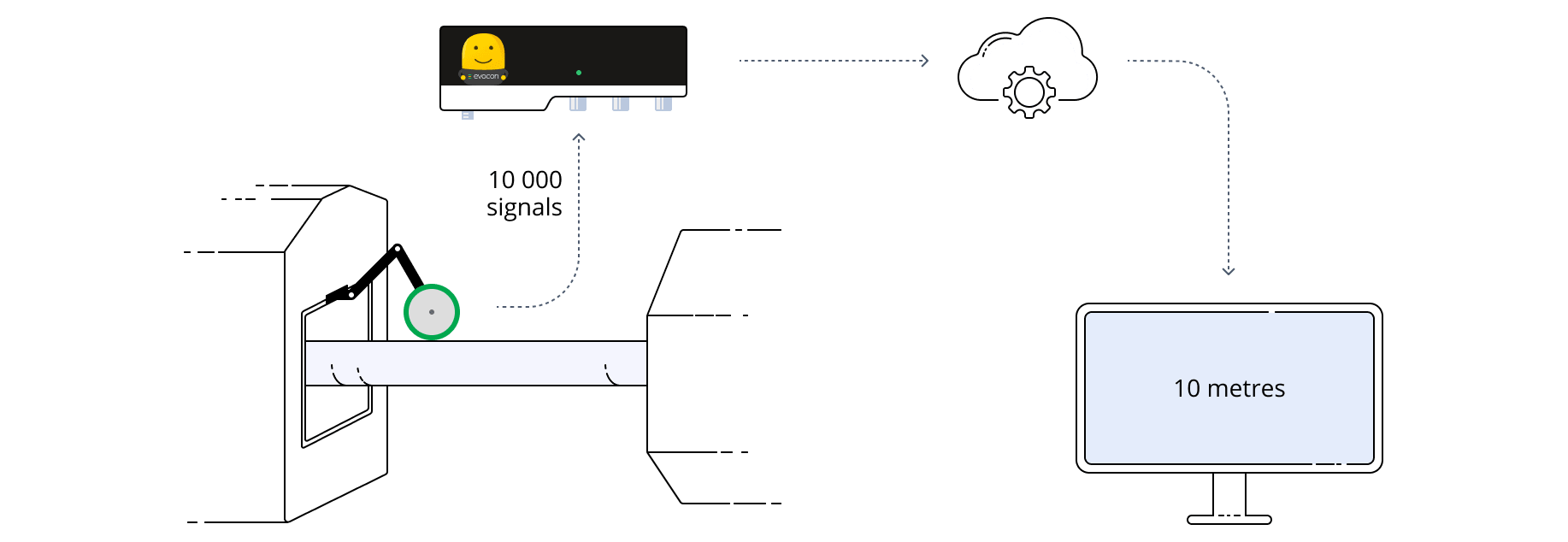
You may already have a device that registers signals from a rotary encoder or a flow meter: a PLC. It is a small computer connected to your equipment directly. Newer automated machines usually have PLCs built into them. If there is a PLC signal available, it is best to choose this method over the signal from a rotary encoder or a meter.
One advantage of that is that any problems with PLC would be spotted and fixed sooner than if something happens to the machine or an encoder/meter. Also, PLC outputs are generally more stable.

Production monitoring system
Monitor production in real-time and boost efficiency with Evocon’s 30 day free trial.
Converting Signals into Length or Volume
Alternatively, you could find out the length or volume of your product not by measuring it directly with a rotary encoder of a flow meter, but by counting pieces of your product.
Let’s say, if the liquid is in canisters, bottles, or tanks, it might be possible to count filled containers with a sensor and configure the system to convert that number into volume units.
The system can store multiple definitions of products and their corresponding weights. When you change from one product to another, different definitions apply.
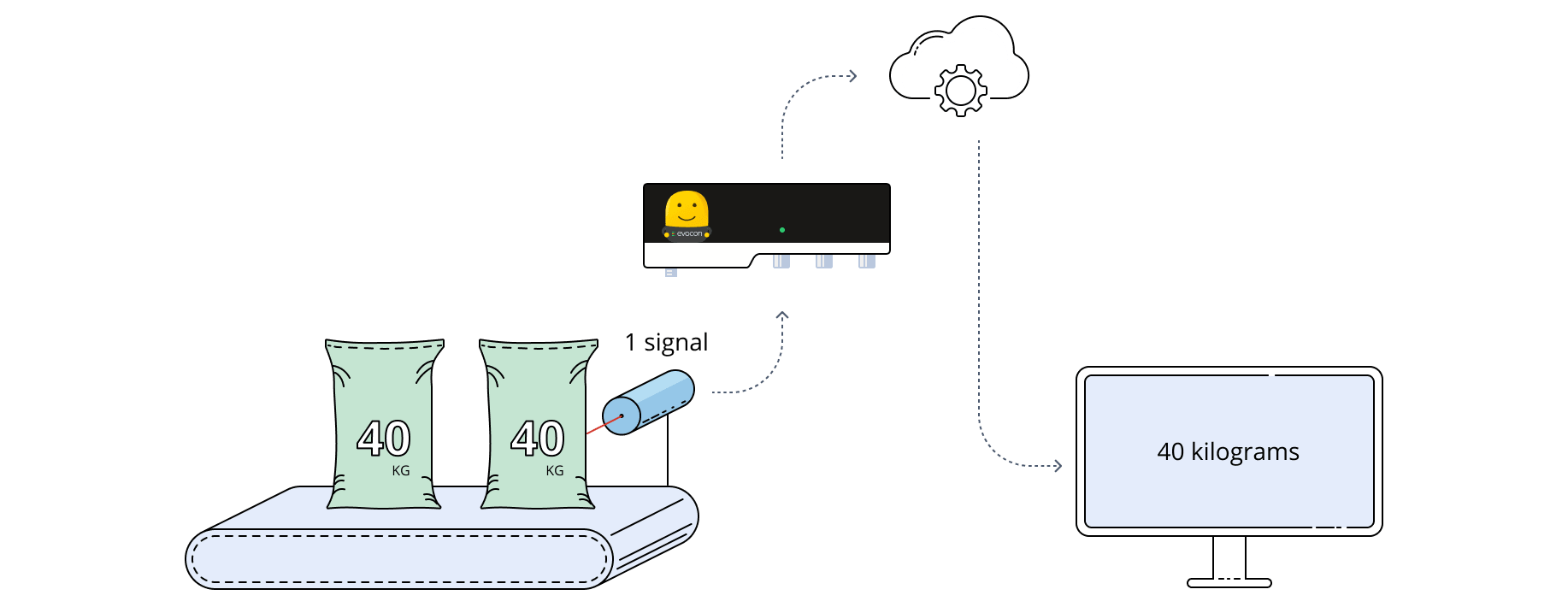
Which Hardware Is Provided by Evocon?
We provide the Evocon’s IIoT device, together with the power supply. You need to have sensors (or other hardware mentioned above) and cables. If requested, we can supply the sensors and necessary connectors and cables at an additional cost.
Below is a picture illustrating Evocon setup, including connection to the network and display devices. For more information, please read our article about setting up Evocon.
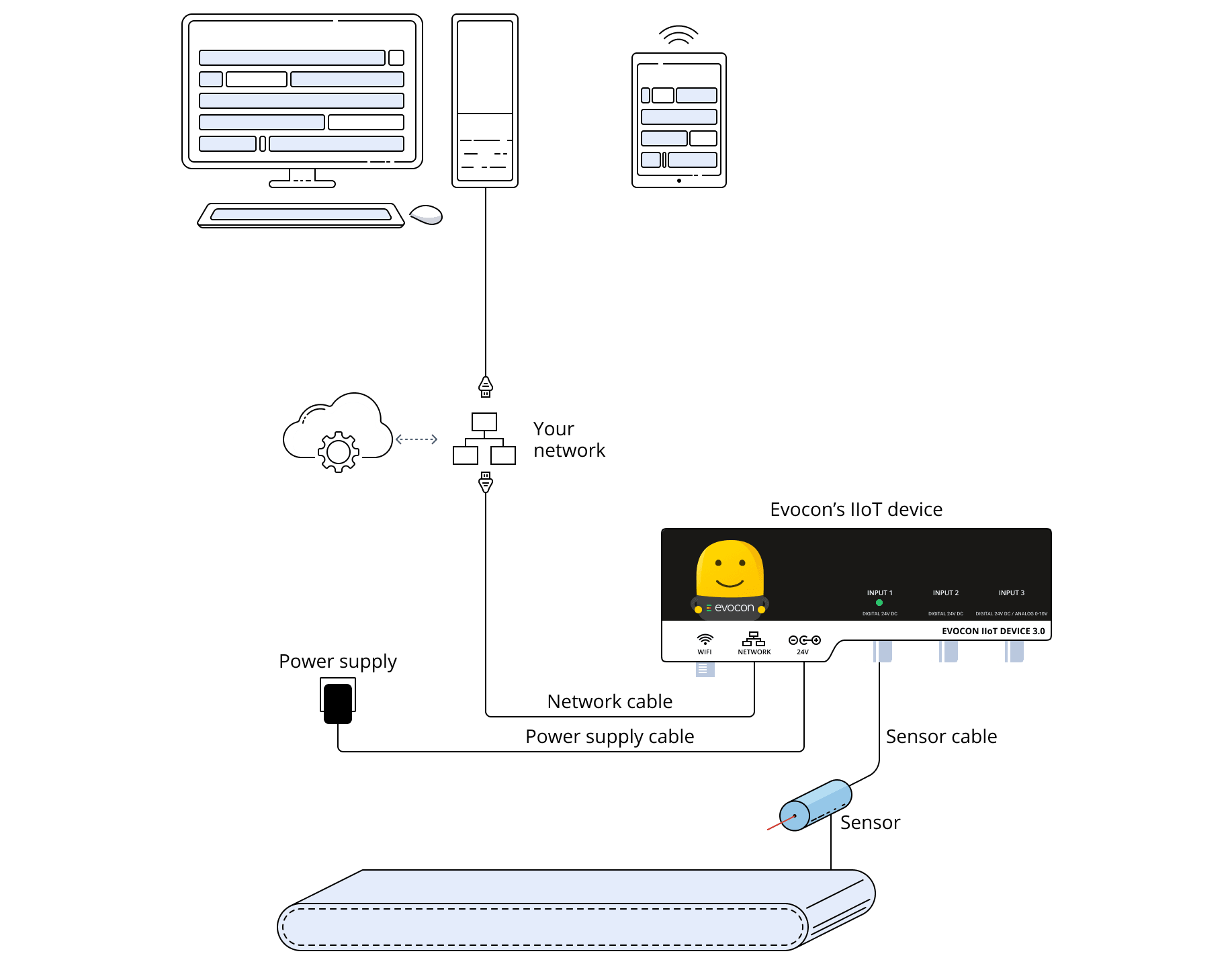
Using Control Signals to Increase the Reliability of Data
In some situations, it is practical to “verify” the validity of a production signal by backing it up with a second signal. For example, you may want to make sure that accidental signals, triggered by the sensor during the maintenance or cleaning process, do not influence your OEE data.
This is how the previous example would work:
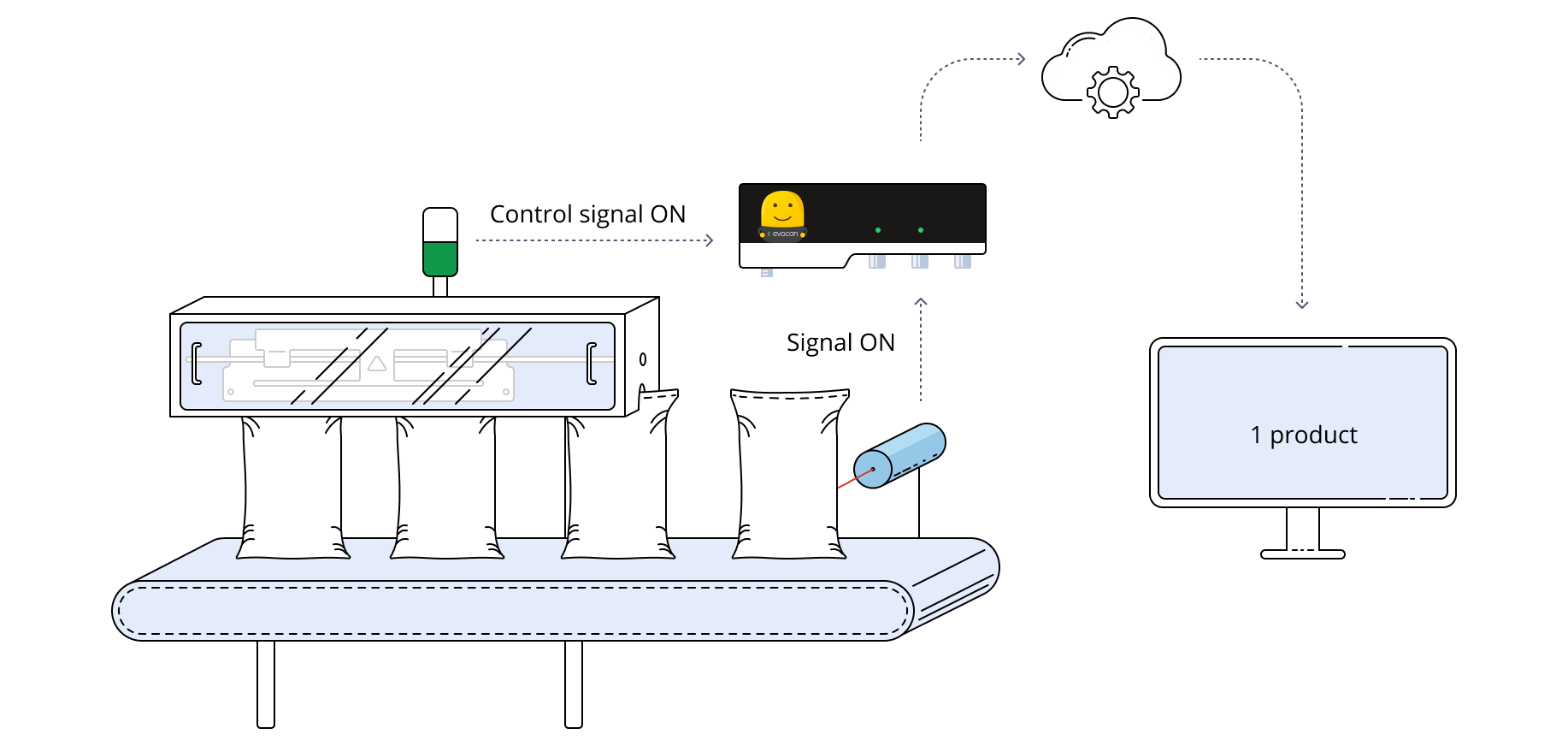
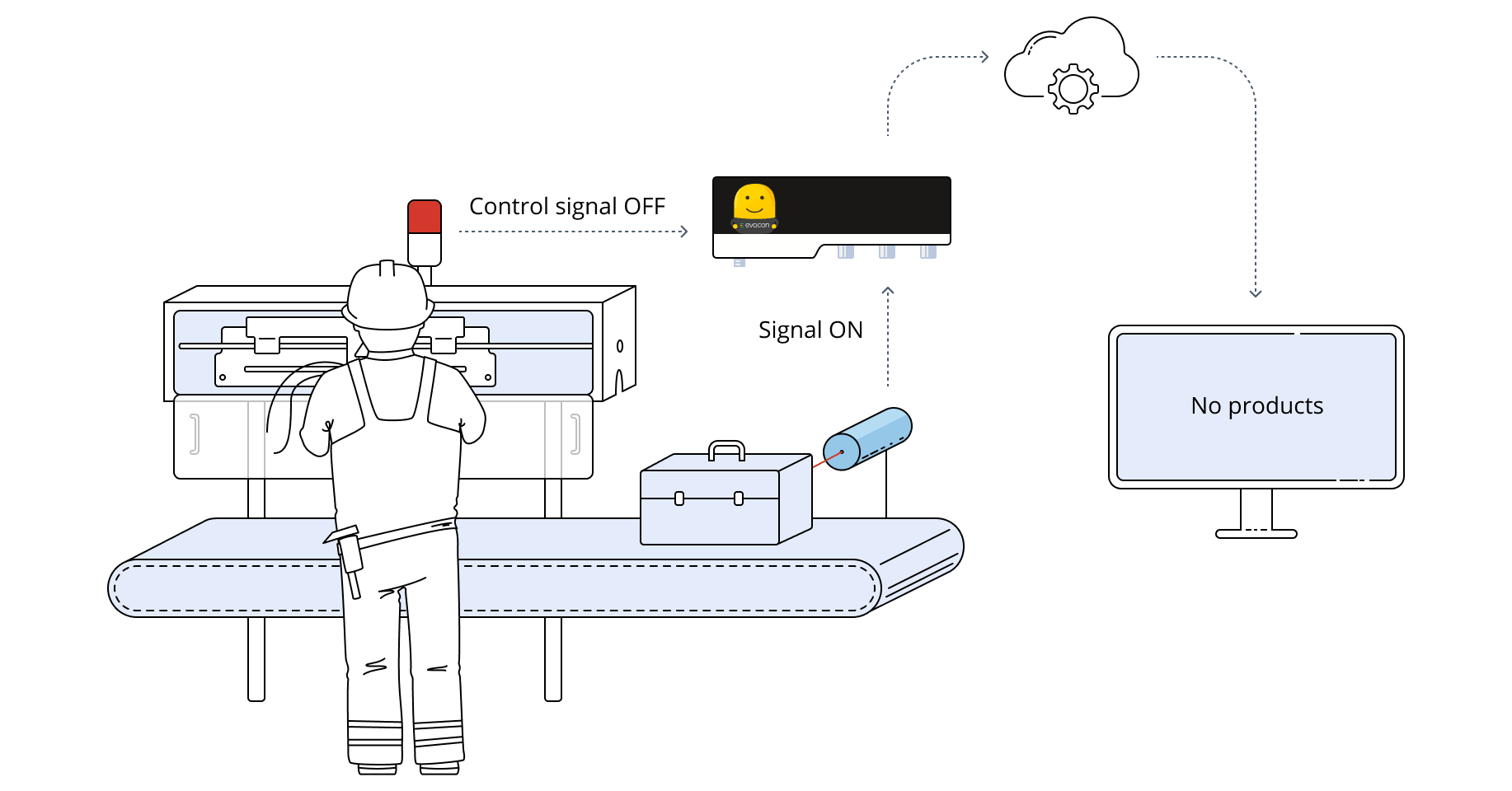
In the picture above, you can see that the primary signal comes from the sensor and the secondary signal – from the Andon light. When the Andon light is on, the Evocon’s device registers sensor signals as usual. When the Andon light is off, it ignores all signals from the sensor.
In our example with the extrusion of pipes, we can also use multiple control signals from the machine to get accurate production data.
